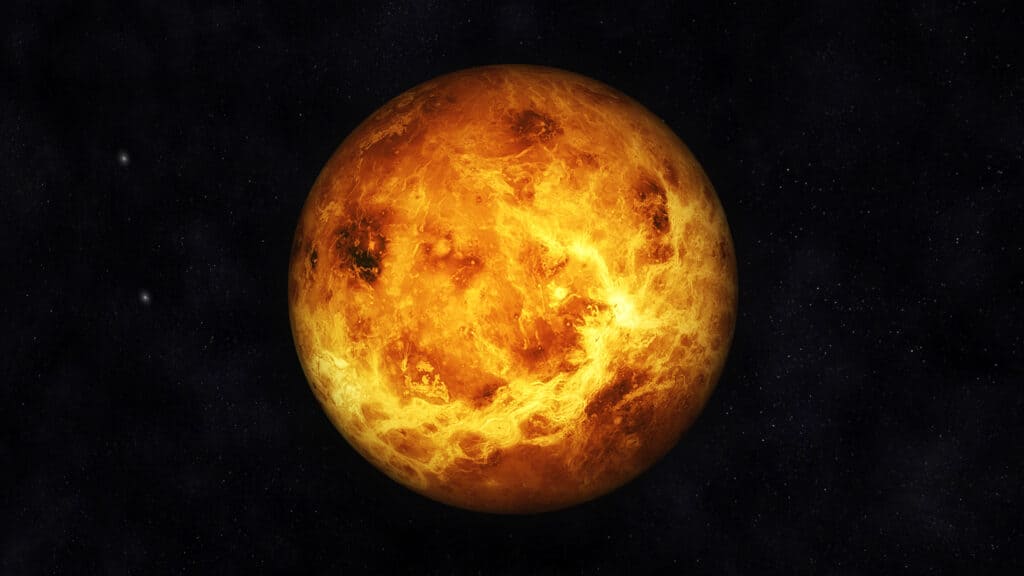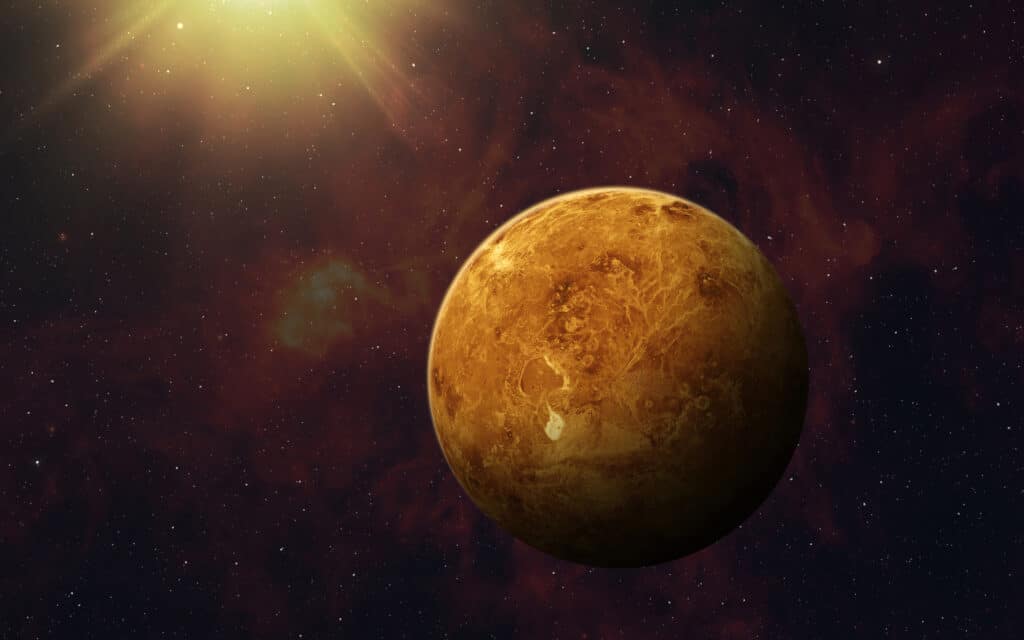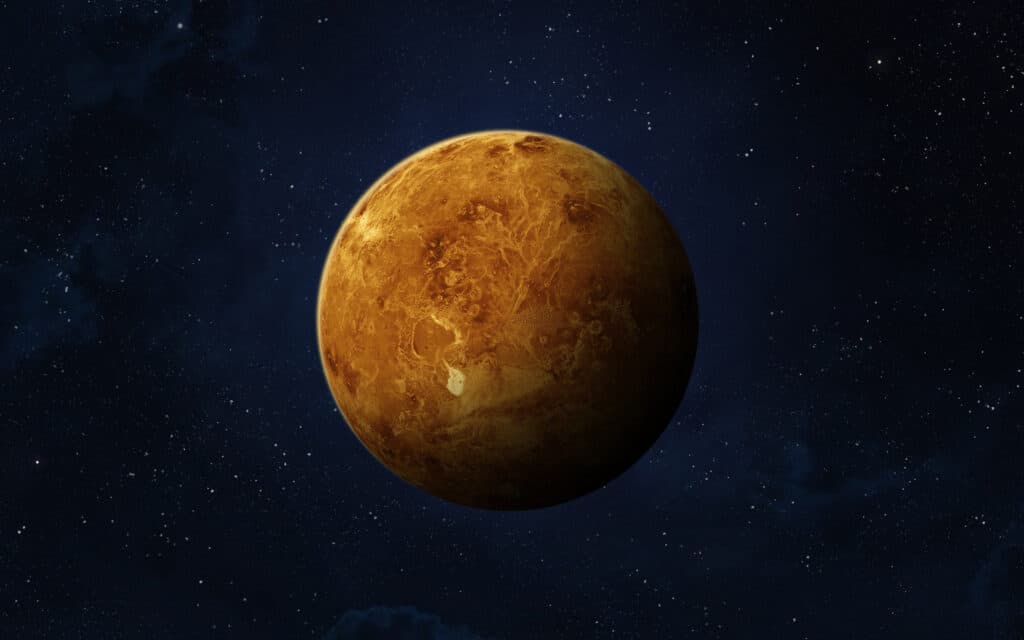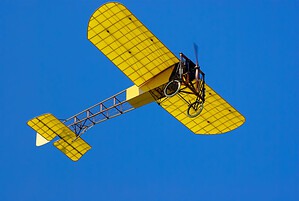Don’t you wish you could jump further? On Earth, the average person can jump about 7 ft 5 inches far. As such, jumping is not a viable means of transportation, like in the case of kangaroos or frogs. But what if we lived on the surface of other planets?
As you probably know, gravity is the force that influences how high and how far you can jump. It influences your strength as well (it affects object weight, after all). You might also know that gravity is different on every other planet and satellite in our Solar System. On Earth, you experience normal gravity, which is 1g of force – or acceleration of 32.2 ft/sec2.
Let’s assume you were on Venus. Leaving aside its scorching hot surface, how far could you jump there? If this is a question that you want to know the answer to, you’re in the right place!
What factors influence the distance of a long jump?

The distance of a long jump is influenced by gravity, the speed at take-off, the angle at take-off, and the height at take-off.
©iStock.com/3quarks
The distance of a long jump is influenced by gravity, the speed at take-off, the angle at take-off, and the height at take-off. By far, the most important factor is the speed at take-off, better known among researchers as approach velocity. It is influenced by the speed of the jumper prior to the jump and right before the moment they jump.
Most of the mentioned factors are constant. If we take as an example professional runners, their speed, angle, and height at take-off will be very similar, regardless of location. Gravity is also a constant factor – it doesn’t change, regardless of the location on Earth.
However, other planets’ gravity is different. Earth experiences what is called normal gravity. This is why you can jump about 6 ft 6 in – 7 ft 5 in far and not more. It is also the reason why there’s a limit to how much you can lift, for example. Let’s take a closer look at how things could work on Venus!
What is the exact gravity on Venus?

The exact gravity on the surface of Venus is 29.10 ft/s
2– or 0.904 g.
©iStock.com/buradaki
The exact gravity on the surface of Venus is 29.10 ft/s2 – or 0.904 g. It is about 90% the gravity of Earth – or 10% weaker. A 10 lbs object on Earth would weigh about 9 lbs on Venus. This value influences the weight of objects (not their mass), your ability to jump, as well as your overall strength.
Venus is one of the planets with a slightly weaker gravity than Earth. On its surface, you’d experience only about 90% of the gravity that pulls you back after jumping. In theory, this means that you’d be in the air for an additional 10% after jumping. Naturally, additional airborne time implies a longer jump distance.
For comparison purposes, the gravity on the Moon is 5.31 ft/s2 – or 0.166 g. It is about 16% the gravity of Earth – or 84% weaker. You can refer to the famous moon walking videos to get an idea and a starting point for the matters in question here.
How far and high could you jump on the surface of Venus?

In theory, you could jump 97.9 inches far on the surface of Venus.
©iStock.com/buradaki
In theory, on Venus, you could jump approximately 1.80 ft high from a standing position and spend 0.70 seconds in the air. On Earth, you can jump about 1.64 ft high and spend 0.63 seconds airborne. This means that, on Venus, you can jump about 1.1 times as high and far away.
Venus is almost as big as our planet. This is one of the reasons why the gravitational force of this planet is similar to the one of Earth. On its surface, running, jumping, and lifting objects is only 10% easier.
In theory, according to the data presented here, you could jump 97.9 inches far on the surface of Venus – 110% of an approximate average 7 ft 5 in (89 inches) jump on Earth. On our planet, this would make you a very good jumper.
How far and high could you jump on the surface of every planet in our Solar System?
Here is how far and how high you could jump on the surface of every planet in our Solar System:
| Jump height (approx.) | Jump distance (approx.) | |
|---|---|---|
| Earth | 1.64 feet | 89 inches |
| Mercury | 4.33 feet | 234 inches |
| Venus | 1.80 feet | 97.9 inches |
| Mars | 4.33 feet | 234 inches |
| Jupiter | 0.62 feet | 34.7 inches |
| Saturn | 1.54 feet | 82.77 inches |
| Uranus | 1.80 feet | 97.9 inches |
| Neptune | 1.41 feet | 77.43 inches |
| Pluto | 24.34 feet | 1,406.2 inches |
How strong would you be on the surface of Venus?
In theory, you’d be 1.1 times as strong on the surface of Venus. On the planet’s surface, 10 lbs feel like 9 lbs. The greatest weight ever lifted, 6,270 lbs, would weigh about 5,668 lbs on Venus.
As a professional weightlifter, you could add about 10% of the total maximum weight you can lift. At the same time, you might have an easier time building up speed for a distance jump. The more speed you have, the farther you can jump. This is the main reason why it is difficult to determine the exact distance you could jump on other planets.
What planet could you jump the farthest and be the strongest on?
You’d have no issue jumping very high or lifting heavy objects on Pluto’s surface. It has a gravity of only 0.063 g – this means that a 100 lb object weighs only 6 lbs on Pluto. At the same time, after jumping, you’d spend about 10 seconds in the air before returning to the ground.
Here’s Venus compared to other planets!
| Planet | Volume | Mass | Surface Gravity | Escape velocity | Average surface temperature |
|---|---|---|---|---|---|
| Venus | 0.857 Earths | 0.815 Earths | 0.904 g | 6.44 mi/s | 847 °F |
| Mars | 0.151 Earths | 0.107 Earths | 0.3794 g | 3.12 mi/s | -81 °F |
| Uranus | 63.086 Earths | 14.536 Earths | 0.886 g | 13.24 mi/s | -353 °F |
| Neptune | 57.74 Earths | 17.147 Earths | 1.14 g | 14.6 mi/s | -373 °F |
| Jupiter | 1.321 Earths | 317.8 Earths | 2.528 g | 37.0 mi/s | -238 °F |
| Saturn | 763.59 Earths | 95.159 Earths | 1.065 g | 22 mi/s | -285 °F |
| Pluto | 0.00651 Earths | 0.00218 Earths | 0.063 g | 0.75 mi/s | -375 °F |
| Mercury | 0.056 Earths | 0.055 Earths | 0.38 g | 2.64 mi/s | 354 °F |
| Earth | 2.59876×1011 cu mi | 1.31668×1025 lb | 1 g | 6.95 mi/s | 57 °F |
Up Next:
- This is How Hot The Surface of Venus Really is, And What Could Survive There
- See How Far You Could Jump, and How Strong You’d Be On The Surface of Mercury
- What’s the Largest Planet in Our Solar System?
- Discover the Largest Star in the Known Universe
The photo featured at the top of this post is © iStock.com/buradaki
Sources
- Cosmos, Available here: https://cosmos-book.github.io/high-jump/index.html
- ScienceDirect, Available here: https://www.sciencedirect.com/science/article/pii/S1877705813011260?ref=pdf_download&fr=RR-2&rr=74b257a1bca41845
Thank you for reading! Have some feedback for us? Contact the AZ Animals editorial team.






